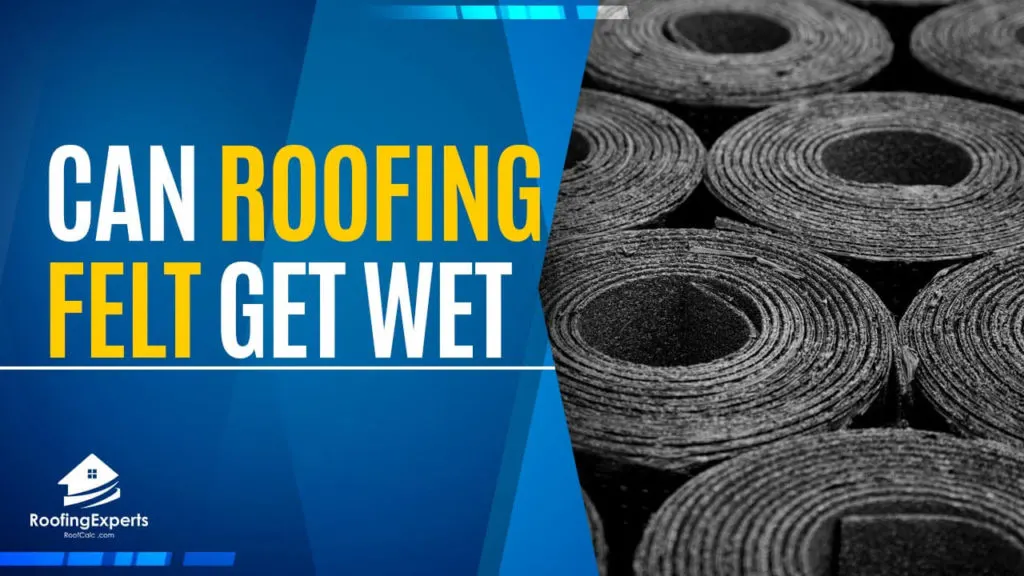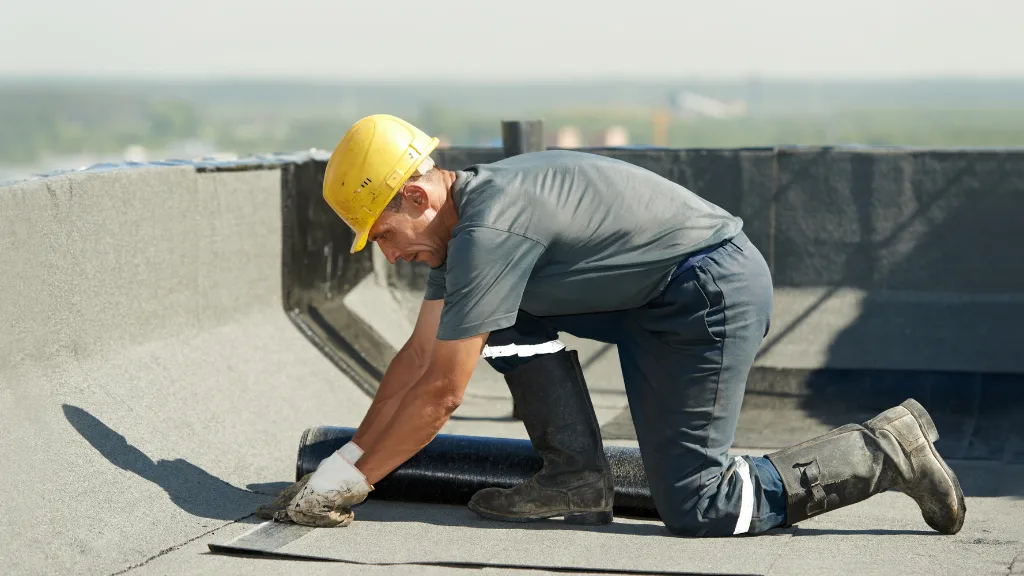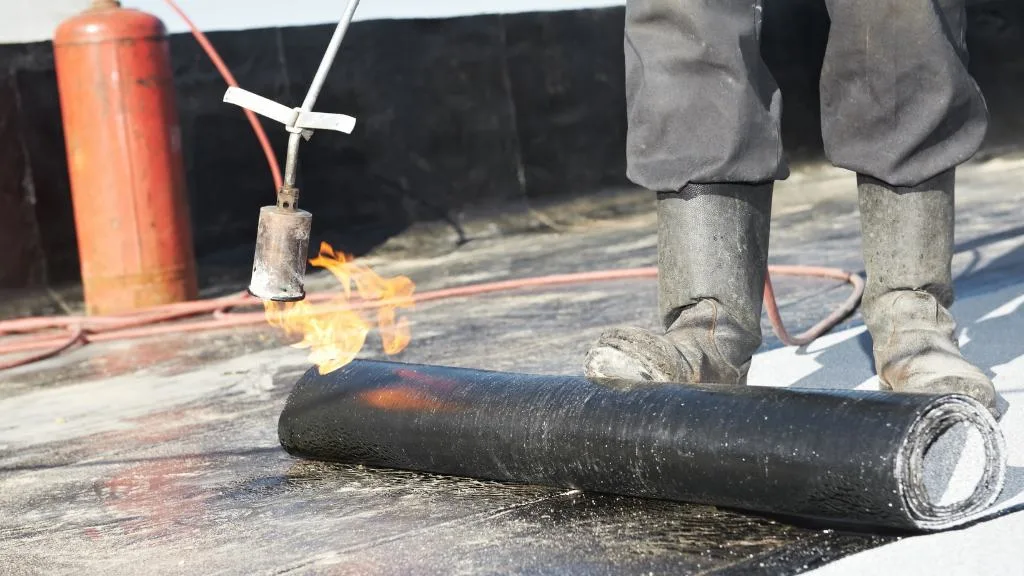
The roof has protected you from days where it withstood the scorching heat and heavy rain. But have you ever wondered, how long will this roof keep me waterproof considering all the weather conditions it has gone through?
In this article, you will know more about roofing felt, from what you need to do, the types of roofing felt, and can it get wet. Let’s dive in…
Can Roofing Felt Get Wet?
Yes, roofing felt can get wet. Although roofing felt is an additional protective layer, it can still get wet. Perhaps, even being wet, the roofing felt sustains its integrity until it doesn’t get exposed to other elements for more than a week or so. It can even break down in sunlight as well due to the amount of moisture.
Is Roofing Felt Waterproof?
Roofing felt is a support material that is required to develop a stable and sustainable roof on a building. Being used as a way to waterproof coverings in commercial buildings or even just the residential place, these membranes comprise two to three layers of protection, confirming that it is waterproof. To further explain, the asphalt element which undergoes petroleum distillation makes the roofing felt waterproof. This means that it gives temporary protection from water while you incorporate tiles and roof covering.
What To Do When Roofing Felt Gets Wet?
When roofing felt gets wet, a professional or even the homeowner can cover it with shingles until and/or unless it is allowed to dry first. The surface beneath it did not get wet and even wrinkle, bubble, or rip. Bubbles or wrinkles can possibly generate some heat pockets which could ultimately damage the shingles within a few months or years.
Meanwhile, rips may host an ability of roofing felt to secure the roof. If you see a wrinkle while the roofing felt is being installed, it is best to inform a professional immediately because further delaying to address the wrinkles can develop cracks, causing a risk of leakage into your home. Also, it is best to watch out for holes and tears in the felt.
What Is Roofing Felt?
Roofing felt, also known as ‘builder’s felt or tar paper, is a protective layer that is rolled on the roof deck which serves as an additional underlayment. The base is composed of either natural materials such as wood cellulose or synthetic ones such as fiberglass or polyester. On top of the protective layer is a coating, which is usually asphalt, which makes the roofing felt water-proof.
Roofing felt keep roofs watertight, while still making it breathable for the roof. It is made from a mixture of asphalt, sand, and fibrous membrane; which can be applied using two different techniques. Considering that the average lifespan of mid-priced roofing felt is about 30 years, it is a sustainable choice for homeowners who would like to make their roofs intact and long-lasting.

Types Of Roofing Felt
There are generally three types of roofing felt: torch-on felt, shed felt, self-adhesive felt. The types of roofing felt differ in weight which results in different thicknesses. The most commonly used felts are the thicker ones, which come in rolls of 3 feet wide and 30 pounds in weight because it protects the roof from water leaks longer and more efficiently.
Torch-on felt
A torn-on felt got its name from the process this roofing felt it made. It sees three layers of modified bitumen (commonly known as asphalt), melt-welded onto the roof with a blow torch, creating a water-proof seal. The lifespan of a torch-on felt roof is around 15-25 years, depending on the extensive weather conditions the area experiences. This application of this type of felt requires professions because the usage of hot flames makes this dangerous.
The torn-on felt is the quickest and most reliable roof installation technique in the UK, which is why this roofing felt type is common in their buildings. This type of roofing felt is traditionally made up of vapor control sheets, cap sheets, and reinforced felt. To hire a professional to cover a garage roof, you would typically need to pay an estimated $880, which is relatively cheaper than other roof protection alternatives such as fiberglass.
Self-adhesive felt
For homeowners who do not opt for hiring a professional to install roofing felt on their roofs, the self-adhesive felt might just be for you. It is relatively the most convenient way to install roofing felt because it does not require hot flames nor does it need professional assistance.
Since it is only an adhesive, it only requires you to peel off the bottom paper in order to place it on the roof. Once it is peeled, the self-adhesive felt will self-bond to the roof, which makes this the easiest alternative for individuals who would want to place roofing felt on small areas in the house such as garages, porches, and small outdoor roofs. It is also a cost-effective alternative to more expensive roofing felt options, although it would just be more vulnerable to mishaps because it does not require professional assistance.
Shed felt
Shed felt is the roofing felt option most suitable for outdoor garden buildings and sheds. It is available in torch-on and self-adhesive applications, and it is a great option for people who would want to have aesthetically pleasing landscaped gardens. The assurance of weatherproof and waterproof finish is also what makes the shed felt appealing to buyers. This would be the best option for people who would want to provide additional protection to their outdoor small projects.

Precaution
Roofing felt, being a health hazard if inhaled or crumbled, the old roofing felts that comprise asbestos were knocked out in the 1980s. If you are replacing the more aged roofing felt containing asbestos on your own, and without any supervision from a professional, then store it in a plastic bag before disposing of it at the toxic waste service.
Conclusion
Roofing felt, despite it being vulnerable to mishaps and waterproofing accidents, is still one of the best options to protect the food from further damaging it in the long run. Adding a protective layer that is waterproof adds additional help to the roof in order to repel water and protect leakages. Roofing felt is designed to repel water, but a homeowner still needs to install roofing felt correctly following its installation guidelines and instructions from professionals.

